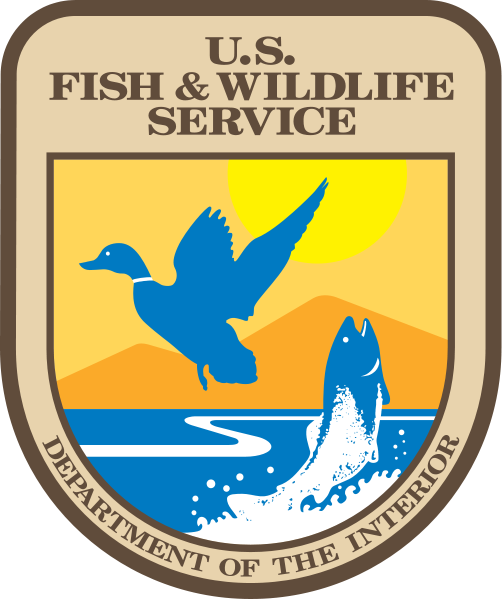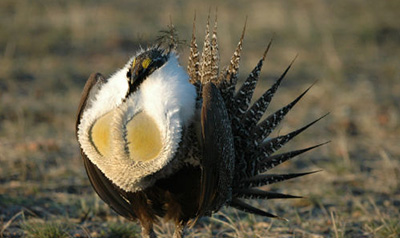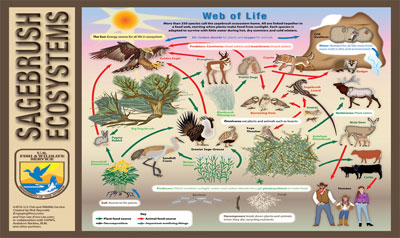Species Information
The section below contains species information about the greater sage-grouse. For questions or concerns regarding our greater sage-grouse species information, please e-mail Theo Stein.
Greater sage-grouse (Centrocercus urophasianus)
Description: The greater sage-grouse (Centrocercus urophasianus) is a large, rounded-winged, ground-dwelling bird. It has a long, pointed tail with legs feathered to the base of the toes and fleshy yellow combs over the eyes.
Males: Males are larger than females and sport a white ruff around their necks in addition to the typical mottled brown, black and white plumage. Males have bright yellow air sacks on their breasts, which they inflate during their mating display.
Females: Females are a mottled brown, black, and white.
Size: Typically 30 inches in length and up to 2 feet tall; Males often weigh in excess of 4-5 pounds and hens weigh in at 2-3 pounds.
Lifespan: 1 to 1-1/2 years; However, they have been found to survive up to 10 years in the wild.
Diet/Feed: Omnivore, eating mainly sagebrush, some other soft plants, and insects.
Habitat: The breeding habitat for the greater sage-grouse is sagebrush country in the western United States and southern Alberta and Saskatchewan. They nest on the ground under sagebrush or grass patches. They live in elevations ranging from 4,000 to over 9,000 feet; cannot survive in areas where sagebrush does not exist.
Distribution: The historic range of the greater sage-grouse included Washington, Oregon, California, Nevada, Idaho, Montana, Wyoming, Colorado, Utah, South Dakota, North Dakota, Kansas, Oklahoma, Nebraska, New Mexico, Arizona, and the Canadian provinces of British Columbia, Alberta, and Saskatchewan. Greater sage-grouse have apparently disappeared from Nebraska, Kansas, Oklahoma, New Mexico, Arizona British Columbia and Saskatchewan.
For more greater sage-grouse facts, click here »
Click here for information on the sage-steppe ecosystem »






